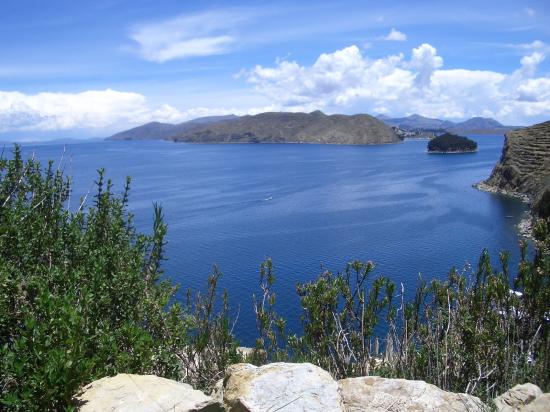Ancient Titicacans Survived Brutal Brawls And Cranial Surgery, Skeletons Show
/25/2015 @ 1:33PM 817 views
Ancient Titicacans Survived Brutal Brawls And Cranial Surgery, Skeletons Show
Jutting out into Lake Titicaca, the Copacabana Peninsula today boasts some of the world’s most gorgeous beaches flanked by verdant terraces and colorful houses nestled into the cliffside. It will come as no surprise that people have lived along the shores of Titicaca nearly continuously since at least 10,000 BC, and archaeologists have worked on the peninsula for decades trying to learn more about ancient Andean history.
The biggest gap in archaeologists’ information about the Copacabana Peninsula is during the Late Intermediate Period (LIP), or roughly 1000-1250 AD. In other parts of the Andes with considerable archaeological evidence, there is a clear increase in traumatic skeletal injuries as the Wari and Tiwanaku states lost power and people scrambled to regain political control in the region. But people seem to have moved away from the Copacabana Peninsula, abandoning large structures like temples.
Bioarchaeologist Sara Juengst recently published her analysis of the only human skeletons to be found on the peninsula from the Late Intermediate Period, at a site called Ch’isi. Writing in the International Journal of Osteoarchaeology with collaborators Sergio Chávez, Dale Hutchinson, and Karen Mohr Chávez, Juengst describes the discovery of nine people buried together in flexed, seated positions in an above-ground burial chamber. They were all adults; a mix of men and women. And every single one of them had survived massive skeletal trauma.
Of the nine people in this tomb, Juengst found that four had suffered either blunt or sharp trauma to the face or head, and seven had suffered injuries to their bodies. Most of the bodily injuries were fractures to the ribs, the face, and the forearms, suggesting these people were the victims of interpersonal violence.
More:
http://www.forbes.com/sites/kristinakillgrove/2015/05/25/surviving-trauma-cranial-surgery-titicaca/
Anthropology:
http://www.democraticunderground.com/12292103
[center]



Lake Titicaca, Copacabana bay[/center]



